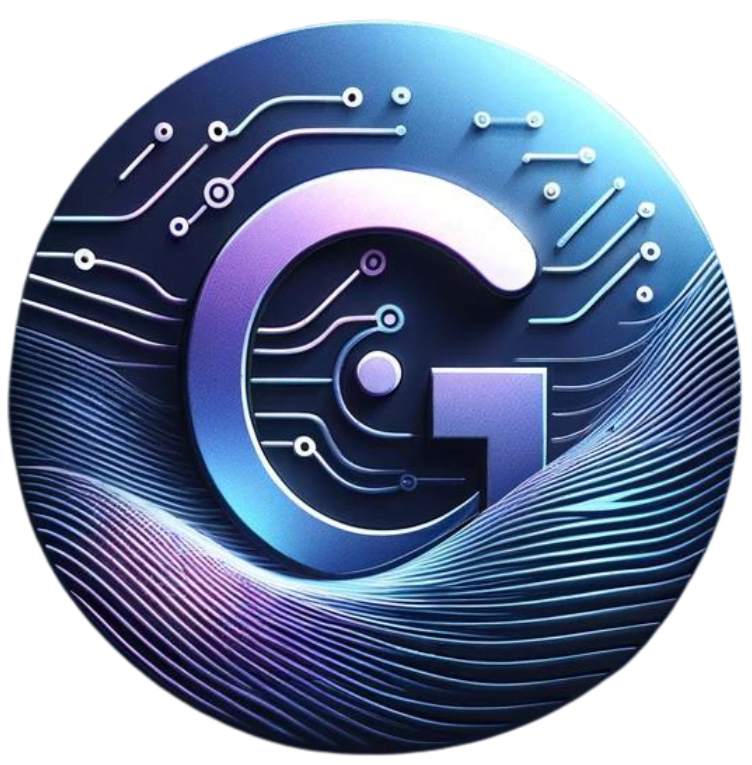Unlocking the Power of TikTok Marketing Across Generations


Introduction to TikTok Marketing
TikTok, a social media platform centered around short-form videos, has rapidly ascended to prominence in the digital landscape. Launched in 2016 by the Chinese company ByteDance, TikTok’s unique blend of user-generated content, algorithm-driven content discovery, and high engagement rates has captured the attention of millions worldwide. By January 2023, TikTok boasted over 1 billion active users globally, a testament to its pervasive appeal and influence.
One of TikTok’s most compelling features is its algorithm, which curates personalized content feeds for users based on their interactions and preferences. This algorithmic approach ensures that users are constantly exposed to new and engaging content, fostering a highly interactive environment. The platform’s emphasis on short, dynamic videos—typically ranging from 15 seconds to 3 minutes—resonates particularly well with younger audiences who favor quick, impactful content consumption.
The platform’s unparalleled engagement metrics make it a goldmine for marketers. According to recent statistics, TikTok users spend an average of 58 minutes per day on the app, with the highest engagement rates among social media platforms. This level of user dedication provides brands with a unique opportunity to connect with their audience in a more authentic and immediate manner.
TikTok’s user demographics are equally compelling for marketers. While the platform is predominantly popular among Gen Z, with 60% of its users aged between 16 and 24, it has also seen substantial growth among Millennials and even Gen X. This broad demographic reach allows businesses to tailor their marketing strategies to various age groups, enhancing their ability to engage with diverse audiences.
As a marketing tool, TikTok has proven invaluable for brands of all sizes. Its versatile format allows for creative storytelling, brand challenges, and influencer collaborations, making it an essential component of modern digital marketing strategies. The subsequent sections will delve deeper into how businesses can leverage TikTok to effectively target different generational cohorts, maximizing their marketing impact.
TikTok Marketing for Generation Z
Generation Z, born roughly between the mid-1990s and early 2010s, represents a unique cohort that has grown up with the internet and social media as integral parts of their daily lives. This digital native generation values authenticity, creativity, and fast-paced content, making TikTok the perfect platform for engaging them. TikTok’s short-form video format and algorithm-driven content feed align seamlessly with Gen Z’s preference for quick, engaging, and relatable media.
To effectively market to Generation Z on TikTok, brands must first understand their desire for genuine and creative content. Gen Z users are particularly drawn to content that feels real and unscripted. This is where user-generated content (UGC) plays a crucial role. Encouraging users to create their own videos around a brand or product not only generates buzz but also builds a sense of community and trust. For instance, Chipotle’s #GuacDance challenge encouraged users to post videos dancing to celebrate National Avocado Day, resulting in a significant increase in engagement and sales.
Viral challenges are another powerful tactic. These challenges often involve a specific task or dance that users can easily replicate and share. A successful example is the #InMyDenim challenge by Guess, which encouraged users to showcase their fashion transformations using Guess denim. This challenge not only boosted brand visibility but also allowed users to creatively express themselves through fashion, resonating deeply with Gen Z’s love for personal expression.
Influencer partnerships are also vital. Collaborating with popular TikTok influencers can amplify a brand’s reach and credibility. Influencers with a strong following can introduce your brand to a wider audience in an authentic and relatable manner. For example, e.l.f. Cosmetics’ partnership with TikTok influencers for the #eyeslipsface challenge generated millions of user-generated videos, making it one of the most successful TikTok campaigns.
Engaging storytelling is essential as well. Gen Z values narratives that are engaging, inclusive, and socially conscious. Brands that tell compelling stories that resonate with Gen Z’s values and experiences can foster deeper connections. Staying current with trends and understanding the Gen Z digital culture is crucial. This includes keeping an eye on popular memes, music, and viral content to ensure your marketing efforts are relevant and timely.
In conclusion, effectively marketing to Generation Z on TikTok requires a nuanced approach that leverages authenticity, creativity, and engagement. By utilizing viral challenges, user-generated content, influencer partnerships, and compelling storytelling, brands can successfully connect with this dynamic and influential generation.
TikTok Marketing for Millennials
Millennials, often characterized as tech-savvy, socially conscious, and community-focused, have a unique approach to social media. This generation values authenticity, experiences, and social responsibility, shaping how they interact with platforms like TikTok. To effectively engage Millennials, it’s crucial to understand their preferences and behaviors.
Firstly, Millennials are drawn to content that reflects their values. Brands can capture their attention by creating videos that emphasize experiences, such as travel vlogs, behind-the-scenes footage, or user-generated content showcasing real-life moments. For example, Airbnb’s TikTok campaign featuring travel stories from real users resonated with Millennials by highlighting authentic experiences.
Humor and nostalgia also play significant roles in appealing to this generation. Millennials appreciate content that makes them laugh or reminds them of their childhood. Brands can leverage this by incorporating popular memes, comedic sketches, or references to ’90s and early 2000s culture. A successful example is the collaboration between the clothing brand Guess and TikTok influencers, who used humor and nostalgic fashion trends to create engaging content that resonated with Millennials.
Collaborating with influencers who align with Millennial interests can amplify a brand’s reach and authenticity. Millennials tend to trust influencers who share their values and lifestyle. Partnering with influencers who advocate for social causes, sustainable living, or mental health can create a stronger connection with this audience. The eco-friendly brand, Lush, effectively collaborates with influencers who promote sustainability, thus reinforcing their brand values among Millennials.
Interactive features on TikTok, such as polls, Q&A sessions, and live videos, are vital for capturing Millennial attention. These features allow for real-time engagement and foster a sense of community. Brands like Red Bull use live videos to showcase extreme sports events, enabling Millennials to engage directly and feel part of the action.
In summary, to successfully market to Millennials on TikTok, brands should focus on authenticity, humor, nostalgia, and social responsibility. By leveraging these elements and utilizing interactive features, brands can build meaningful connections with this influential generation.
TikTok Marketing for Generation X and Beyond
While TikTok is often associated with younger audiences, Generation X and older demographics are increasingly finding their place on the platform. This trend presents a unique opportunity for marketers to reach a more mature audience that values educational content, DIY projects, and life hacks. Understanding these preferences is crucial to effectively engaging this demographic.
Generation X and older users are drawn to content that provides tangible value. Educational videos that offer practical advice or demonstrations on various topics, from home improvement tips to financial planning, resonate well with this group. DIY projects and life hacks are particularly popular, as they align with the self-sufficient and resourceful nature of these generations.
To market effectively to Generation X and beyond, brands should focus on creating informative and value-driven content. Leveraging TikTok’s educational features, such as tutorials and how-to videos, can help capture the attention of this audience. Collaborating with niche influencers who specialize in areas relevant to these users can also enhance credibility and trust. Influencers who are knowledgeable in fields like home improvement, cooking, or personal finance can provide authentic and relatable content that appeals to older users.
Building trust and credibility with older demographics on TikTok requires a thoughtful approach. Transparency and authenticity are key; brands should ensure that their messaging is clear and honest. Additionally, showcasing real-life applications of products or services can help establish a connection with this audience. Examples of brands that have successfully engaged Generation X on TikTok include those that share customer testimonials, behind-the-scenes content, and expert insights.
Cross-promoting TikTok content on other social media platforms where Generation X and older users are more active is also important. Platforms like Facebook and LinkedIn can help drive traffic to TikTok profiles and increase engagement. By creating a cohesive and integrated social media strategy, brands can maximize their reach and impact across multiple channels.
Conclusion and Additional Resources
In this blog post, we have explored the multifaceted landscape of TikTok marketing and its potential to engage diverse generational cohorts. The importance of tailoring marketing strategies to the distinct preferences and behaviors of each generation cannot be overstated. Understanding these unique characteristics enables marketers to craft more effective and impactful campaigns, ensuring that the content resonates deeply with the intended audience.
From Gen Z’s preference for authentic, short-form content to Millennials’ inclination towards value-driven and interactive experiences, each generation brings its own set of expectations and engagement styles. By leveraging these insights, marketers can create targeted campaigns that not only capture attention but also foster meaningful connections with their audience.
Encouragingly, the dynamic nature of TikTok offers ample opportunities for experimentation. Marketers are urged to utilize the tactical hacks discussed, ranging from leveraging trending hashtags to collaborating with influencers, to enhance their campaign’s reach and effectiveness. Continuous adaptation to TikTok’s evolving landscape is vital, as the platform frequently updates its features and algorithms, influencing content visibility and engagement rates.
For those seeking to deepen their knowledge and refine their TikTok marketing strategies, additional resources are available. We invite readers to visit georgefeola.io for a wealth of information and insights on effective TikTok marketing practices. By staying informed and adaptable, marketers can unlock the full potential of TikTok, driving successful campaigns across generational divides.

